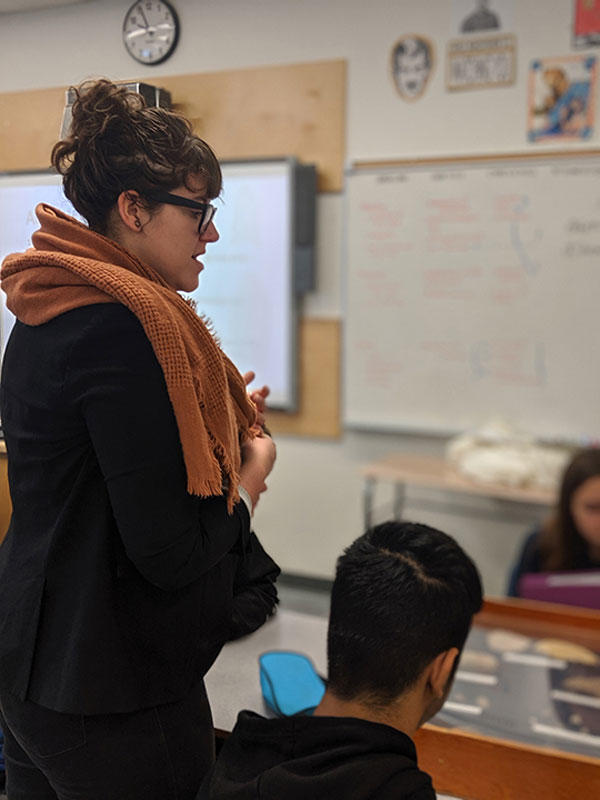June 22, 2020
Archaeology’s Indigenous Youth Engagement Program expands with online programming

Since 2016, the University of Calgary’s Department of Anthropology and Archaeology has invited schools with high percentages of Indigenous students in Grades 7 to 12 to participate in its Indigenous Youth Engagement Program. With both an in-classroom and a field trip component, the program aims to give students a unique experience to connect with their past by exploring science, art, social studies, language, culture, and Alberta prehistory using the lens of archaeology.
This year, as schools went remote due to the COVID-19 pandemic, the classroom visits and field excavations were cancelled.
- Photo above: A fall 2019 classroom visit as part of the Indigenous Youth Engagement Program. Photo by Alix Esterhuizen
“We decided to use this time as an opportunity to develop online programming to expand the reach of the Indigenous Youth Engagement Program in the future,” says Lindsay Amundsen-Meyer, field school director. “Our hope is that we can offer this to schools further away, and to more remote Indigenous communities.”
Supported by a financial donation by Stantec, graduate students Madisen Hvidberg and Mary Sine have been working this spring on creating the online programming.
Programming links to Alberta's curriculum
“We are creating lesson plans that can be linked back to the Alberta curriculum in Grades 7 to 12, as well as to topics covered in the Indigenous Youth Engagement Program,” says Hvidberg. “That way, it’s easier for teachers to see exactly where our programming fits into lessons they already have.”
An example of a lesson plan Hvidberg created introduces students to rock art and archaeology. It aligns with the topic of Alberta Prehistory and compliments Alberta’s Educational Curriculum.
“The lesson contains various definitions and self-guided activities,” explains Hvidberg. “For example, students can learn about a few well-known rock art sites in Southern Alberta, with followup interpretation questions for different grade levels.”
Transitioning from preparing fieldwork to developing online programming offered Hvidberg the opportunity to continue to pursue public outreach activities.
I think it’s really important for both Indigenous and non-Indigenous students to have a chance to learn about the Indigenous history of Canada.
“The online programming gives us a direct channel to discuss these concepts with the next generations. And the fantastic part is it really can be used by everyone who wants to learn,” says Hvidberg.
Archaeology plays key role in reconciliation
The Indigenous Youth Engagement program aids in addressing some of the Calls to Action established by the Truth and Reconciliation Commission of Canada. Amundsen-Meyer believes archaeology plays a key role in reconciliation.
“The archaeological record represents the shared past of our country’s Indigenous and non-Indigenous inhabitants,” says Amundsen-Meyer. “Our program really provides a unique opportunity that seeks to build intercultural understanding, empathy and mutual respect among participants, a key step in the reconciliation progress.”
By the end of this month, the team hopes to have online lessons ready to share. For more information on the Indigenous Youth Engagement Program, visit the website.



